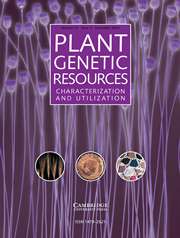No CrossRef data available.
Article contents
Genetic characterisation of Annona crassiflora as basis for conservation and breeding
Published online by Cambridge University Press: 09 October 2024
Abstract
Annona crassiflora is a fruit-bearing tree species native to the Cerrado that has ecological and economic potential, mainly due to the production of attractive and useful fruits for a number of species, including humans. To provide a basis for its conservation and breeding, the objective was to assess the diversity and genetic structure of natural populations of the species using inter-simple sequence repeat (ISSR) molecular markers. Eight populations were analysed in the state of Minas Gerais, Brazil, with 24 individuals randomly sampled in each population, reaching a total of 192 trees. Ten ISSR primers were used, resulting in high genetic diversity for the combined data (H* = 0.35 and I* = 0.52). However, a wide range of representative values was observed in the individual assessment of populations, with JAN, GM and MC standing out for their low genetic diversity, resulting in H* of 0.19, 0.23 and 0.24 and I* of 0.28, 0.34 and 0.35, respectively. An analysis of molecular variance showed greater variation within populations, indicating gene flow (Nm), but genetic differentiation between populations was moderate. Bayesian analysis, although resulting in four genetic groups, revealed the presence of a majority group for the GM and JAN populations. We propose measures to maintain these populations, such as raising awareness of local extractivism and planting genetically divergent seedlings. Furthermore, we recommend including of all populations in conservation and breeding programmes, aiming to cover the maximum genetic variation for the species.
- Type
- Research Article
- Information
- Copyright
- Copyright © The Author(s), 2024. Published by Cambridge University Press on behalf of National Institute of Agricultural Botany


